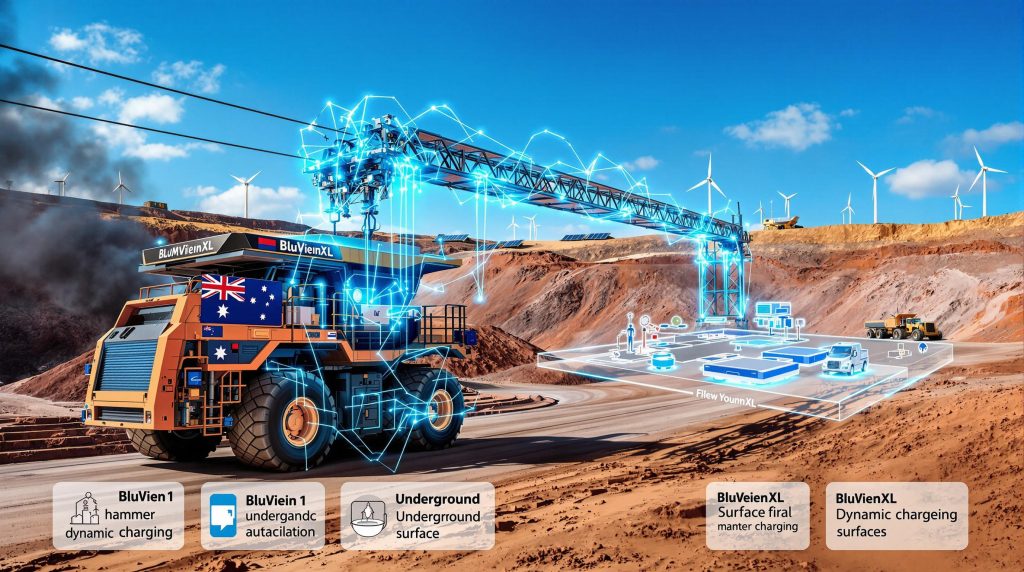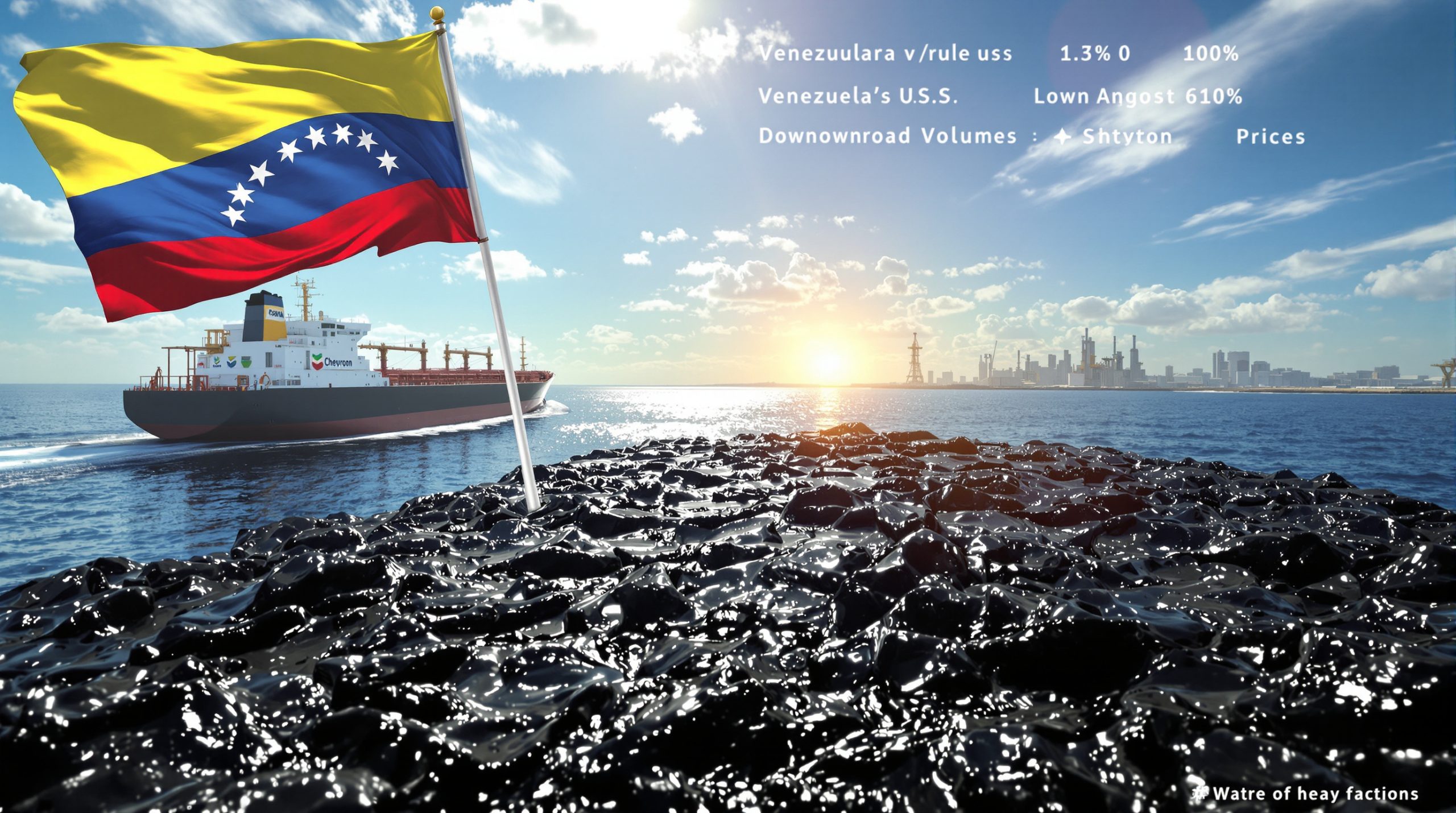The Rise of Renewable Energy in Mining Operations
Australia's mining sector stands at a pivotal crossroads as it confronts the dual challenges of maintaining productivity while reducing its substantial environmental footprint. The industry's heavy reliance on diesel fuel has long been a significant contributor to Australia's industrial emissions profile.
"Australia's heavy industries are a major source of emissions and energy use. If we're serious about hitting our climate targets, we need bold solutions," notes Darren Miller, CEO of the Australian Renewable Energy Agency (ARENA). The mining sector's dependence on "billions of litres of diesel fuel" represents both an environmental challenge and an opportunity for transformation.
The shift from diesel-powered vehicles to electric alternatives is gaining momentum across Australia's mining landscape. This transition isn't merely environmentally motivated—it also presents operational advantages including reduced maintenance costs, improved air quality in underground operations, and decreased noise pollution.
Mining companies are increasingly recognizing that sustainable operations aren't just good for the environment but also for their bottom line. With rising fuel costs and carbon pricing mechanisms on the horizon, early adopters of renewable energy solutions position themselves advantageously for future regulatory landscapes.
The Environmental Imperative
The mining sector's environmental footprint extends beyond just carbon emissions. Diesel engines produce particulate matter and other pollutants that affect air quality around mining sites. This pollution impacts both the surrounding environment and the health of mining personnel, particularly in enclosed underground operations.
Renewable energy integration into mining operations represents a comprehensive approach to sustainability that addresses multiple environmental concerns simultaneously. By electrification powering mines with renewable energy, mining operations can dramatically reduce both their carbon footprint and local air pollution.
Economic Drivers of the Transition
While environmental benefits are significant, the economic case for renewable energy in mining continues to strengthen. As renewable energy costs decrease and diesel prices fluctuate, the total cost of ownership increasingly favors electric alternatives.
Electric mining vehicles offer reduced maintenance requirements, with fewer moving parts and no need for regular oil changes. Additionally, they provide more precise power delivery and improved torque characteristics, potentially enhancing operational efficiency in demanding mining environments.
What Is BluVein's Innovative "Hammer and Rail" Technology?
At the forefront of mining electrification stands BluVein's groundbreaking "hammer and rail" technology, a solution specifically engineered to address the unique challenges of powering heavy mining vehicles with renewable electricity.
"BluVein's innovative hammer and rail technology could offer a solution for Australia's reliance on billions of litres of diesel fuel by using renewable energy delivered through the grid to power mining haul trucks," explains Darren Miller of ARENA. This "first-of-its-kind dynamic charging technology" represents a significant leap forward in mining industry evolution.
The technology enables "safe, in-motion electrification," allowing mining vehicles to receive power while operating rather than requiring lengthy stationary charging sessions. This continuous power delivery mechanism effectively eliminates one of the primary barriers to electric vehicle adoption in mining: operational downtime for charging.
How the Dynamic Charging System Works
BluVein's system utilizes a specialized rail installed along mining routes, which carries both power and communication signals. Mining vehicles are equipped with a "hammer" attachment—a sophisticated connection device that maintains contact with the rail while the vehicle is in motion. This creates a continuous electrical connection that powers the vehicle and charges its onboard battery simultaneously.
The system incorporates advanced safety features, including automatic disconnection capabilities and insulation monitoring. These safety mechanisms ensure the system can operate reliably even in the challenging and often harsh conditions typical of mining environments.
Advantages Over Traditional Power Systems
Unlike conventional battery-only electric vehicles that require significant downtime for charging, BluVein's technology allows for continuous operation. The system also overcomes the limitations of diesel-powered vehicles, including emissions, fuel transport logistics, and ventilation requirements for underground operations.
The technology offers mining operations greater flexibility than fixed overhead catenary systems, which require continuous overhead contact and limit maneuverability. BluVein's rail-based approach can be strategically implemented along primary haulage routes while allowing vehicles to operate independently when needed.
ARENA invests in sustainable mining with BluVein
The Australian Renewable Energy Agency's $9 million grant to BluVein represents a significant milestone in the journey toward sustainable mining practices. Announced on August 16, 2025, this investment targets one of the most challenging aspects of industrial decarbonization: heavy transport in mining operations.
This funding will enable BluVein to "trial its 'hammer and rail' charging technology for heavy haulage battery electric mining vehicles," setting the stage for potential industry-wide adoption if successful. The investment acknowledges the critical role that innovative charging solutions play in overcoming the practical limitations of battery-only electric vehicles in high-intensity mining applications.
James Oliver, BluVein's CEO, emphasized the transformative potential: "This project, supported by ARENA, will demonstrate how BluVein1 and BluVeinXL can decarbonize Australia's mining sector by enabling safe, in-motion electrification. By reducing diesel reliance, we aim to lower emissions and enhance operational efficiency, paving the way for sustainable mining practices."
Strategic Alignment with Climate Goals
This investment aligns directly with Australia's broader climate ambitions. The mining sector represents a significant portion of the country's industrial emissions, making it a critical focus area for decarbonization efforts. By targeting mining vehicle electrification, ARENA addresses a particularly challenging emissions source that has proven resistant to conventional reduction strategies.
The project's success could establish a blueprint for similar implementations across Australia's extensive mining operations, potentially yielding substantial emissions reductions while maintaining or enhancing productivity. This balance between environmental protection and economic performance is central to Australia's managed transition to a lower-carbon economy.
Public-Private Partnership Model
The BluVein project exemplifies the power of public-private partnerships in driving technological innovation. ARENA's public funding reduces private sector risk in developing and demonstrating novel technologies, while BluVein brings specialized technical expertise and industry connections.
This collaborative approach helps bridge the "valley of death" that often prevents promising clean energy technologies from reaching commercial maturity. By sharing risk and resources, ARENA and BluVein increase the likelihood of successful technology demonstration and subsequent industry adoption.
BluVein1 vs. BluVeinXL: Technical Specifications
BluVein's technology comes in two distinct variants, each tailored to specific mining environments and operational requirements. Understanding the differences between these systems helps clarify their respective applications and potential impacts on mining operations.
Underground Mining Solution: BluVein1
BluVein1 has been specifically designed for underground mining applications where space constraints, ventilation requirements, and unique operational challenges prevail. This system supports vehicles in the 40-60 tonne range, providing up to approximately 1MW of charging capacity.
Underground mining presents particular challenges for vehicle electrification. Limited space restricts battery size, while ventilation requirements for diesel engines add significant operational costs. BluVein1 addresses these challenges by providing continuous power delivery without emissions, potentially eliminating or reducing ventilation requirements while maintaining operational capability.
The underground implementation also benefits from the controlled environment of mining tunnels, where rail installation can follow predetermined routes. This structured environment supports consistent power delivery and may simplify implementation compared to more varied surface mining scenarios.
Surface Mining Application: BluVeinXL
For open-pit and surface mining operations, BluVein has developed BluVeinXL, designed for "ultra-class heavy surface haulage trucking." This system delivers approximately 8MW of charging power, suitable for the largest mining vehicles operating in surface environments.
Surface mining operations typically utilize significantly larger vehicles than underground mines, with some haul trucks exceeding 400 tonnes when fully loaded. These massive vehicles demand extraordinary power delivery capabilities, which BluVeinXL's 8MW system aims to satisfy.
The surface implementation faces different challenges than underground applications, including more varied terrain, exposure to weather conditions, and less predictable operational patterns. BluVeinXL's design accounts for these factors while maintaining the core benefits of dynamic charging technology.
Comparative Advantages
Both systems share fundamental technological principles but differ significantly in scale and implementation details. BluVein1 prioritizes space efficiency and addresses the specific challenges of underground environments, while BluVeinXL focuses on delivering the massive power requirements of ultra-class surface mining vehicles.
These complementary solutions allow mining operations to apply appropriate technology based on their specific operational context. This flexibility increases the potential for widespread adoption across Australia's diverse mining industry, from underground gold and copper mines to massive open-pit iron ore operations.
How Will This Technology Transform Mining Operations?
The implementation of BluVein's dynamic charging technology promises to fundamentally reshape multiple aspects of mining operations, from day-to-day logistics to long-term planning and environmental management.
Operational Continuity Improvements
Perhaps the most immediate benefit comes from the elimination of extended charging downtime. Traditional battery-electric solutions require vehicles to stop operations for charging, creating logistical complications and reducing overall equipment utilization. BluVein's in-motion charging effectively eliminates this constraint, allowing for continuous operation similar to diesel vehicles but without the emissions.
This operational continuity translates directly to productivity improvements. Mining operations typically measure efficiency in terms of material moved per hour or per day, and minimizing vehicle downtime directly enhances these metrics. The ability to maintain continuous operations while transitioning to electric vehicles represents a significant advantage over alternative electrification approaches.
Integration with Renewable Energy
The technology creates new opportunities for renewable energy integration in mining operations. As James Oliver noted, the system aims to use "renewable energy delivered through the grid to power mining haul trucks." This connection creates a direct pathway for solar, wind, and other renewable sources to power heavy mining equipment.
For mining operations with on-site renewable generation, the BluVein system can serve as an efficient energy distribution mechanism, delivering power directly to vehicles rather than requiring intermediate battery storage. This direct utilization improves overall system efficiency and reduces the need for extensive stationary battery installations.
Economic Benefits Beyond Emissions Reduction
While environmental benefits drive much of the interest in mining electrification, the economic case grows increasingly compelling. Diesel fuel represents a significant operational expense for mining companies, often accounting for 20-30% of operating costs in heavy haulage operations. Electrification offers potential long-term cost stability, particularly as renewable energy prices continue to decline.
Additionally, electric drivetrains typically offer lower maintenance requirements than diesel equivalents, potentially reducing maintenance costs and increasing vehicle availability. The combination of fuel savings, maintenance reduction, and increased operational time creates a compelling total cost of ownership case for electrified mining vehicles.
ARENA invests in sustainable mining with BluVein
ARENA's support for BluVein fits within a comprehensive investment strategy targeting industrial decarbonization, with particular emphasis on transportation and heavy industry applications. This strategic approach has developed progressively since the program's inception in 2021.
Evolution of ARENA's Clean Transportation Portfolio
ARENA's transportation electrification investments have grown increasingly ambitious over time. The program began in 2021 with funding for fast charging infrastructure, addressing the fundamental requirements for electric vehicle adoption. This foundation-building phase established basic capabilities while gathering operational data and building industry relationships.
More recent investments demonstrate an escalating focus on heavy-duty and industrial applications. In December 2024, ARENA provided 10 million AUD to Fortescue to develop MW-scale charging technology. Earlier in 2024, the agency invested over 20 million AUD across three e-mobility projects, building momentum toward industrial-scale solutions.
The BluVein investment represents the culmination of this progression, targeting one of the most challenging transportation electrification scenarios with technology specifically designed for mining applications. This strategic escalation demonstrates ARENA's commitment to addressing progressively more difficult decarbonization challenges.
The Industrial Transformation Stream Program
The BluVein grant marks "the closing of the second round of ARENA's 'Industrial Transformation Stream Program,'" a dedicated funding initiative targeting emissions-intensive industrial sectors. This structured program provides a framework for consistent, targeted investments in technologies with significant decarbonization potential.
ARENA has announced plans for a third funding round in Q4 2025, indicating continued commitment to industrial decarbonization. This programmatic approach provides industry stakeholders with visibility into future funding opportunities, encouraging long-term planning and development of suitable technologies for consideration.
Strategic Impact of the Investment Approach
ARENA's investment strategy emphasizes catalytic funding—supporting technologies at critical development stages to accelerate commercial readiness and market adoption. This approach maximizes the impact of public funding by targeting specific barriers to commercial deployment rather than providing ongoing operational subsidies.
By supporting BluVein's mining vehicle charging technology, ARENA addresses a critical gap in the mining electrification landscape. Successful demonstration of this technology could unlock broader investment opportunities 2025 from mining companies themselves, amplifying the impact of ARENA's initial funding many times over.
What Challenges Must Be Overcome for Widespread Adoption?
Despite its promising potential, BluVein's technology faces several significant challenges on the path to widespread industry adoption. Understanding these barriers helps contextualize both the technology's development journey and the strategic importance of ARENA's support.
Technical Implementation Challenges
Mining environments present extraordinary challenges for any technology implementation. Underground mines feature confined spaces, high humidity, and potentially explosive atmospheres. Surface operations contend with extreme temperatures, dust, and vibration. Any technology deployed in these environments must demonstrate exceptional durability and reliability.
For BluVein's rail-based system, physical installation presents particular challenges. Mining routes may require modification to accommodate rail installation, while maintenance procedures must be developed to ensure system reliability despite constant exposure to dust, moisture, and physical impacts.
The electrical systems must also incorporate robust safety features to protect personnel in the event of system damage or failure. This includes insulation monitoring, ground fault detection, and emergency disconnection capabilities—all of which add complexity to the system design.
Integration with Existing Operations
Mining operations typically represent massive capital investments with expected lifespans measured in decades. Introducing new technologies requires careful integration planning to minimize disruption to ongoing operations while maximizing adoption benefits.
The transition to electrified vehicles requires not just new charging infrastructure but also modifications to operational procedures, maintenance protocols, and personnel training. These organizational changes can be as challenging as the technical implementation itself, requiring careful change management and stakeholder engagement.
Economic Considerations for Mining Companies
While the long-term economic case for electrification appears strong, the transition requires significant upfront investment. Mining companies must navigate this capital expenditure within their broader financial constraints and competing investment priorities.
The business case analysis must account for various factors including fuel savings, maintenance reduction, productivity impacts, and carbon pricing considerations. These calculations become particularly complex when considering the long asset lifecycles typical in mining operations, where equipment may remain in service for 10-15 years or more.
Industry Perspectives on Electric Mining Vehicles
The mining industry's approach to electrification reflects both growing environmental awareness and practical operational considerations. Perspectives vary significantly across the industry, influenced by factors including company size, geographic location, commodity focus, and regulatory environment.
The Spectrum of Adoption Readiness
Major mining companies have publicly committed to emissions reduction targets, with many explicitly mentioning vehicle fleet electrification as a key strategy. These companies typically have greater financial resources to invest in new technologies and may face stronger stakeholder pressure regarding environmental performance.
Mid-tier and smaller mining operations often take a more cautious approach, watching developments closely but waiting for proven technology before committing significant capital. For these companies, operational reliability and economic performance tend to outweigh environmental considerations in technology adoption decisions.
The geographic location of mining operations also significantly influences electrification potential. Mines with reliable grid connections may find electrification more straightforward than remote operations dependent on diesel generation. Similarly, mines in jurisdictions with carbon pricing mechanisms or strict emissions regulations may have stronger economic incentives for early adoption.
Balancing Environmental and Operational Priorities
Mining company decision-makers must balance multiple competing priorities when considering electrification investments. Environmental performance represents just one factor alongside safety, productivity, cost management, and technical feasibility.
Safety considerations present both challenges and opportunities. Electric vehicles eliminate certain risks associated with diesel (such as exhaust emissions in confined spaces) but introduce new considerations around high-voltage systems and battery safety. These trade-offs require careful evaluation within each operational context.
Productivity impacts similarly present mixed considerations. While BluVein's continuous charging approach aims to maintain or improve operational continuity, the transition period itself may involve temporary disruptions as systems are installed and personnel adapt to new equipment and procedures.
Future Implications for Australia's Mining Sector
The successful implementation of BluVein's technology could catalyze broader transformation across Australia's mining sector, with implications extending beyond individual mining operations to impact national economic and environmental outcomes.
Potential for Industry-Wide Emissions Reduction
Australia's mining sector represents approximately 10% of the country's total greenhouse gas emissions, with diesel consumption in heavy vehicles constituting a significant portion of this footprint. Widespread adoption of electric mining vehicles could substantially reduce these emissions, particularly if powered by renewable electricity.
This emissions reduction potential aligns with Australia's international climate commitments and domestic environmental policies. As carbon constraints tighten globally, mining operations with lower emissions intensity may gain competitive advantages in international markets increasingly sensitive to supply chain environmental performance.
Competitive Positioning in a Changing Market
As global markets increasingly prioritize responsibly sourced materials, Australian mining operations adopting lower-emission technologies may secure preferential access to environmentally conscious customers. This market differentiation could prove particularly valuable for minerals used in clean energy technologies, where environmental credentials throughout the supply chain receive growing scrutiny.
Early adopters of technologies like BluVein's charging system may establish operational expertise that becomes increasingly valuable as the industry transitions. This first-mover advantage could position Australian mining companies as global leaders in sustainable mining practices, potentially creating export opportunities for both resources and technological expertise.
Technology Development and Diversification
Successful demonstration of mining electrification technologies creates opportunities for Australia to develop expertise in adjacent technology areas. The skills and knowledge developed through projects like BluVein could support innovation in related fields including battery technology, power electronics, and renewable energy integration.
This technological diversification supports Australia's broader economic goal of adding value beyond resource extraction. By developing intellectual property and specialized capabilities in mining technology, Australia can capture
Ready to Capitalise on the Next Major Mining Discovery?
Stay ahead of the market with Discovery Alert's proprietary Discovery IQ model, delivering real-time notifications on significant ASX mineral discoveries and turning complex data into actionable investment insights. Visit the Discovery Alert discoveries page to understand how major mineral discoveries can lead to exceptional market returns, and begin your 30-day free trial today.




